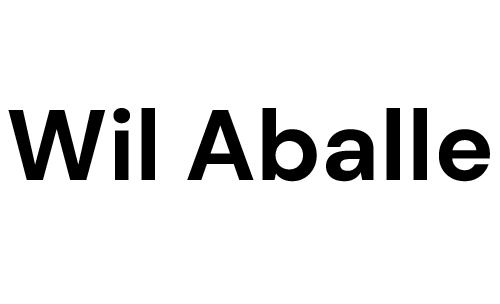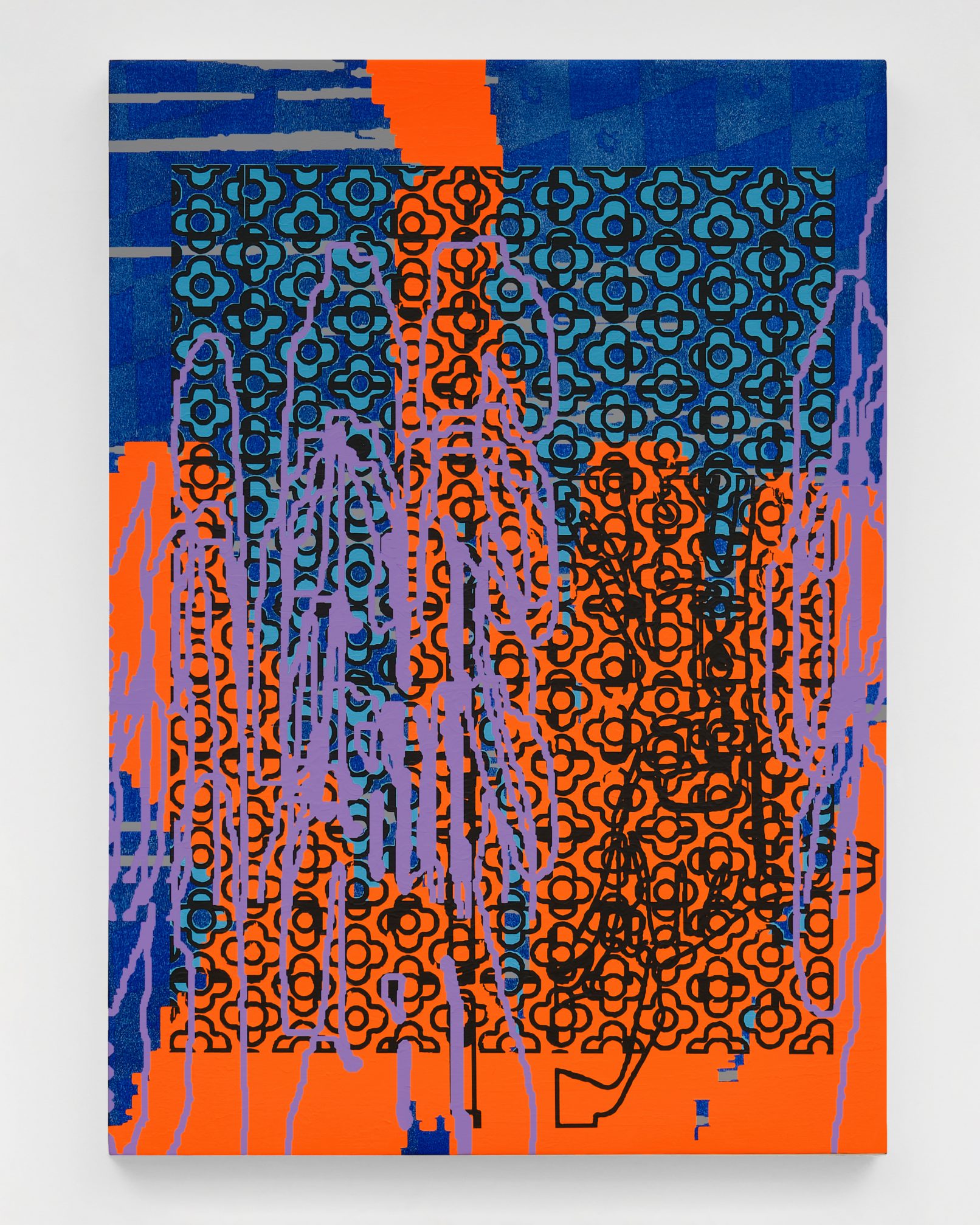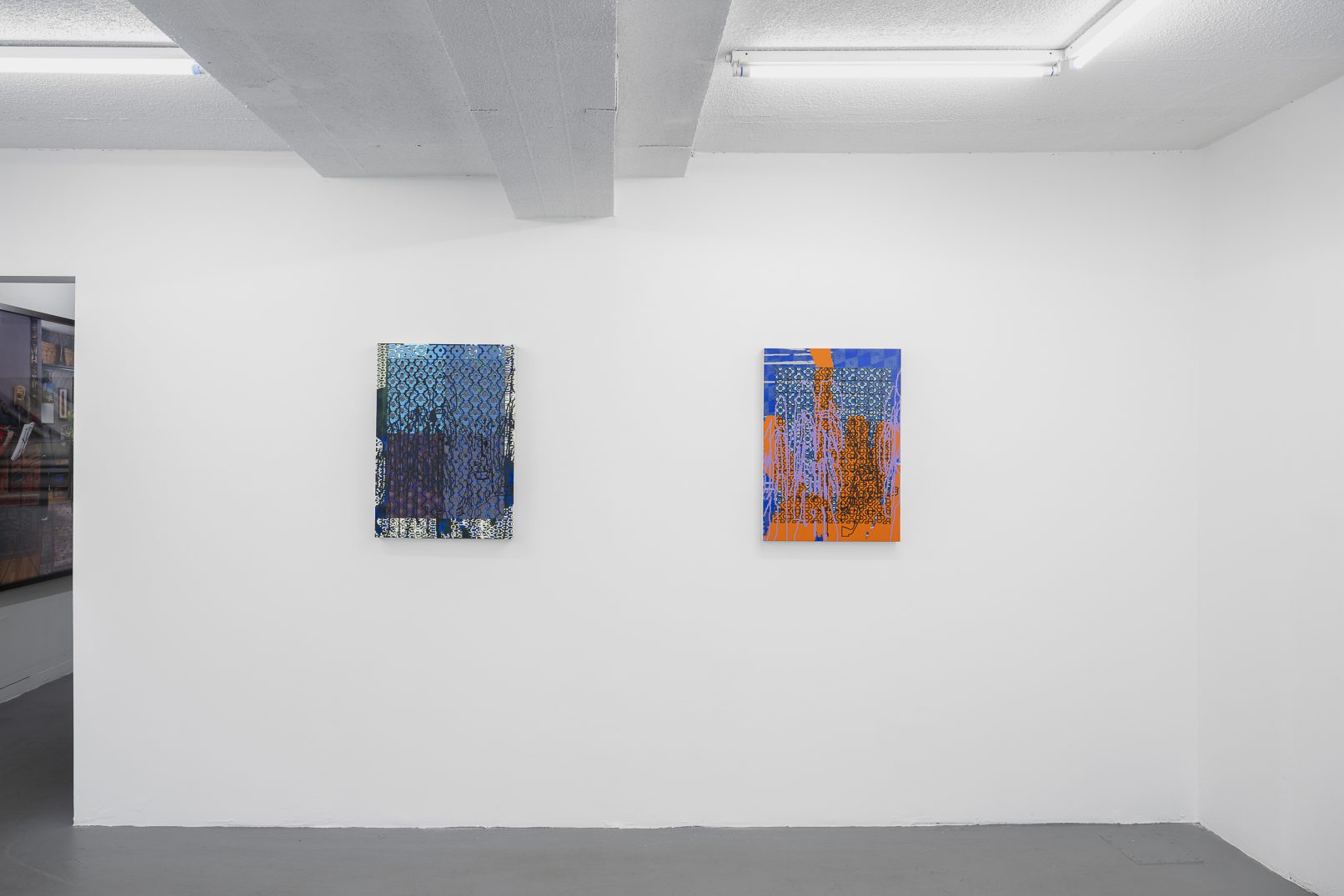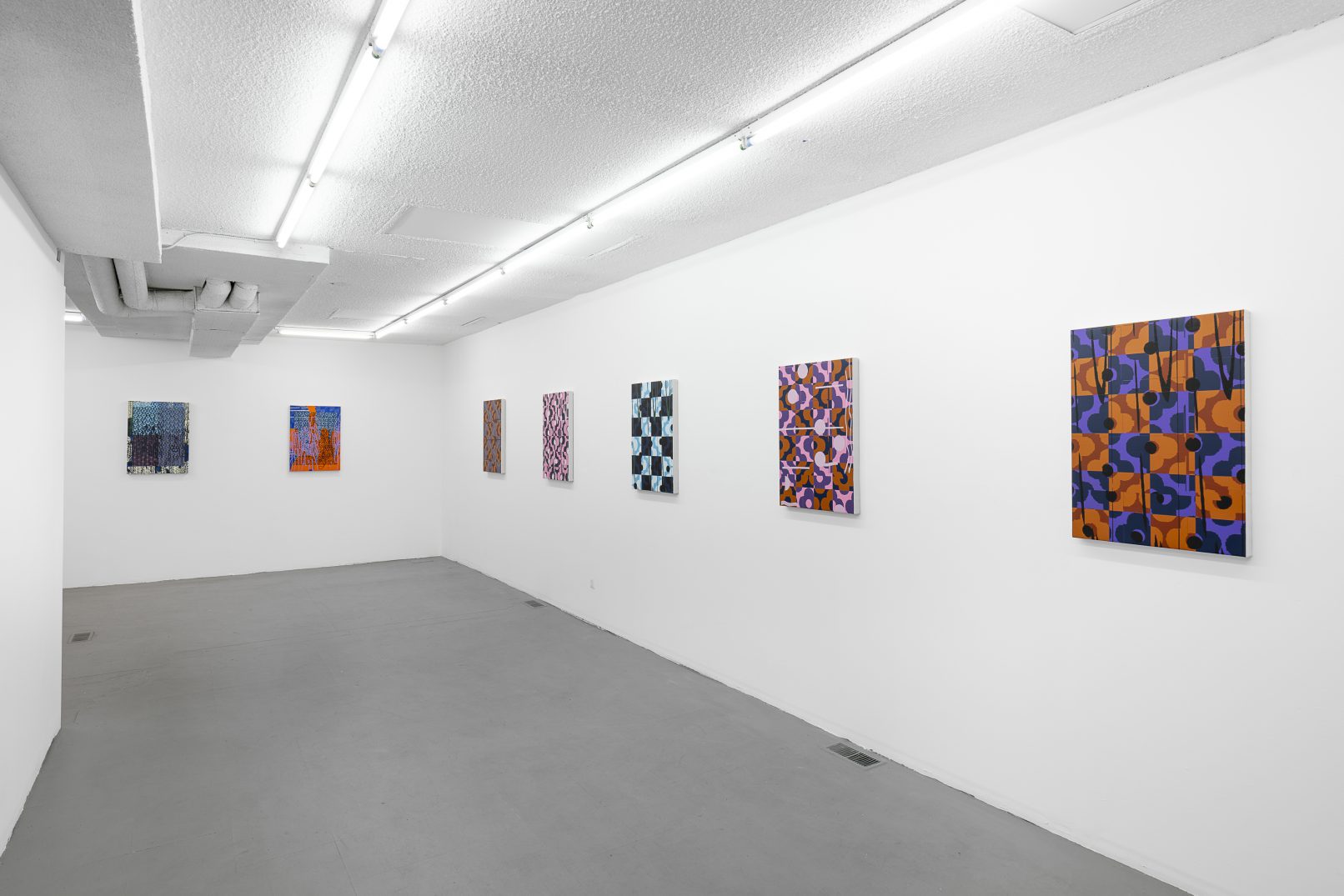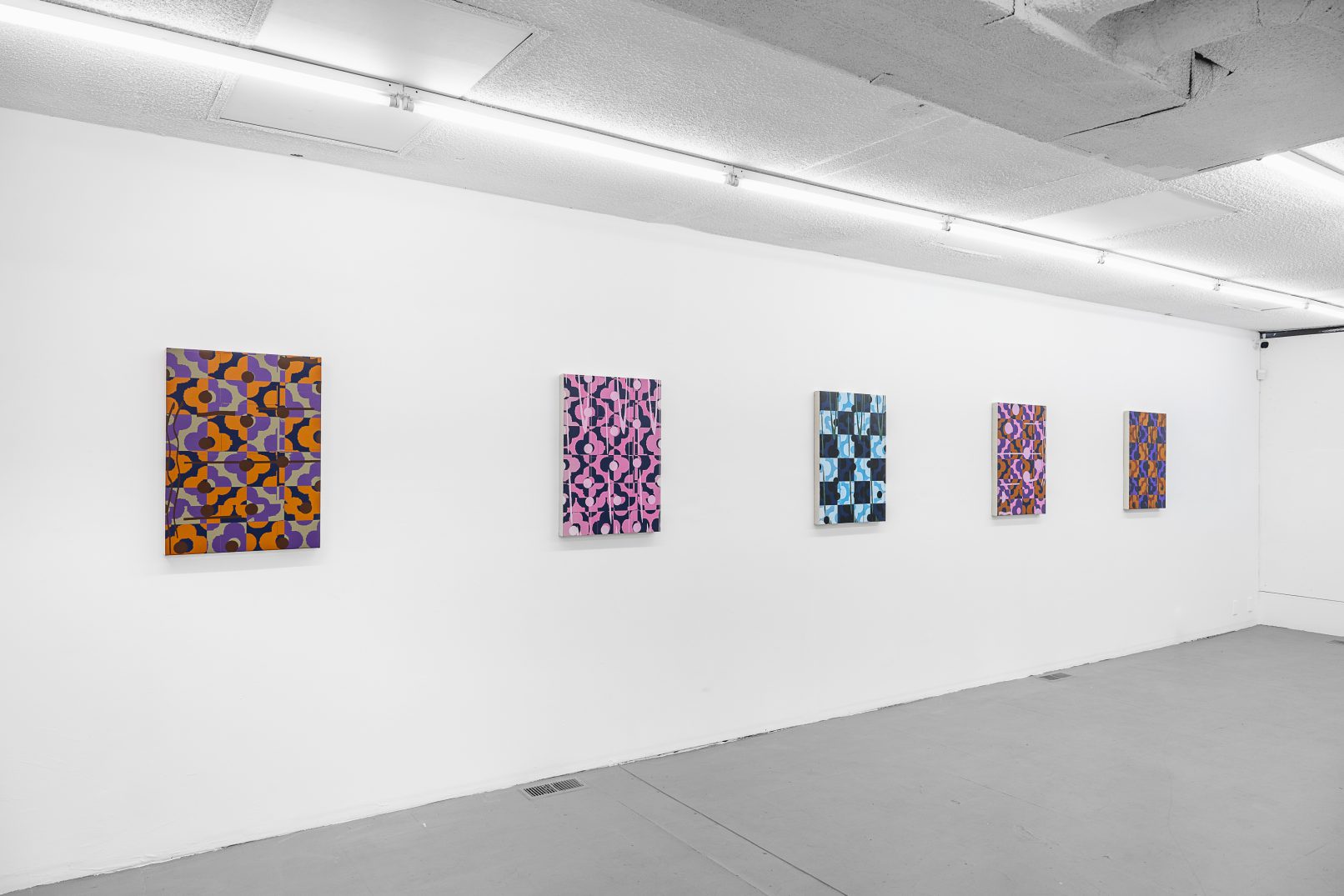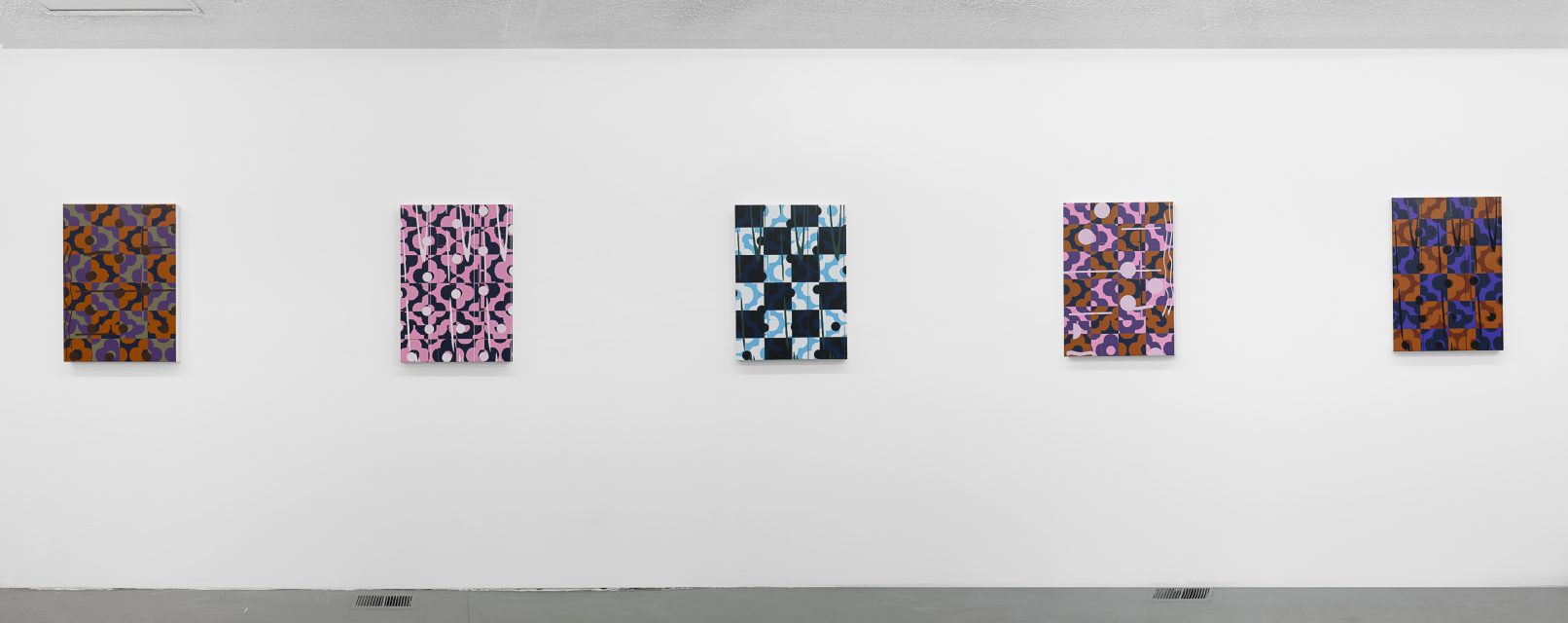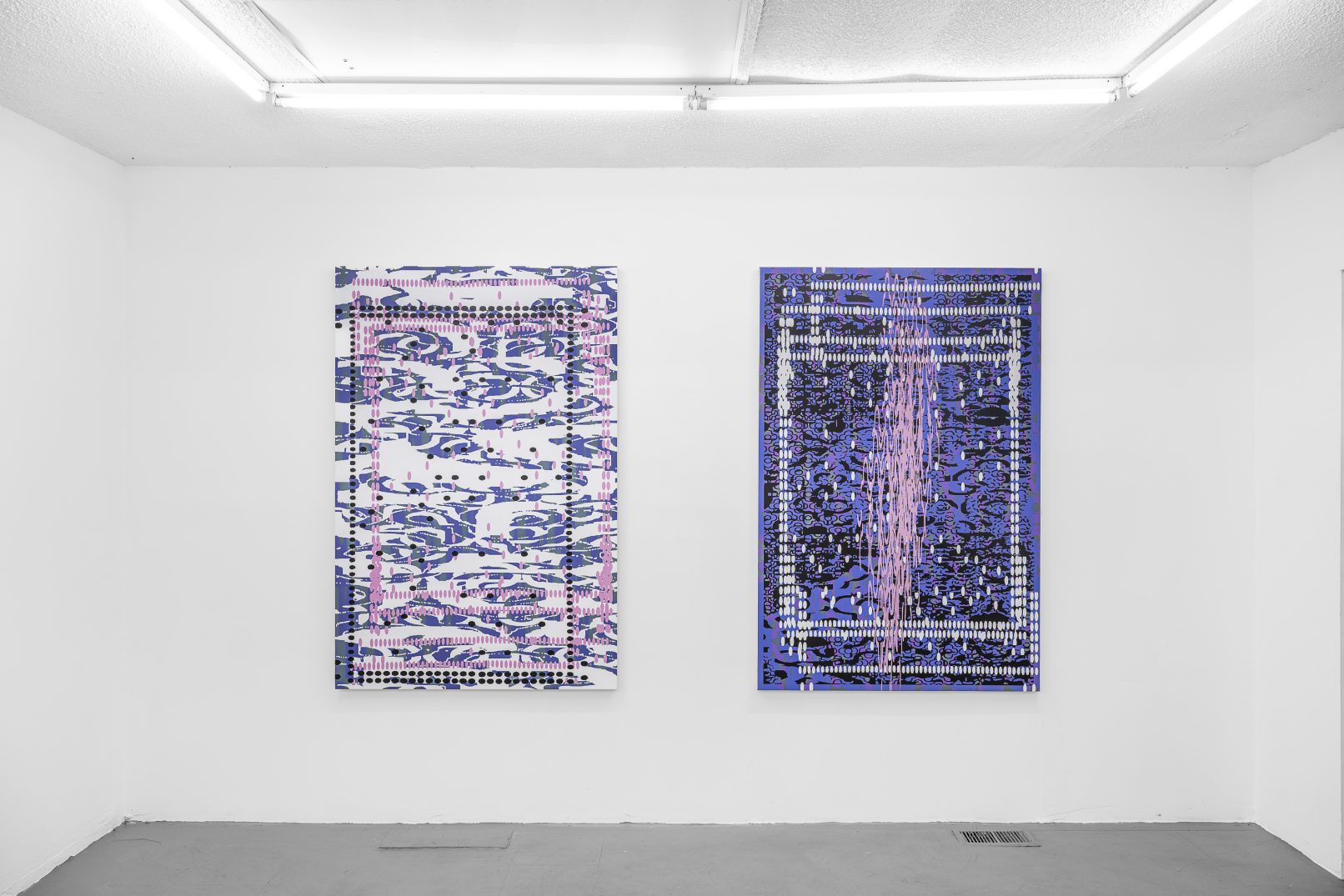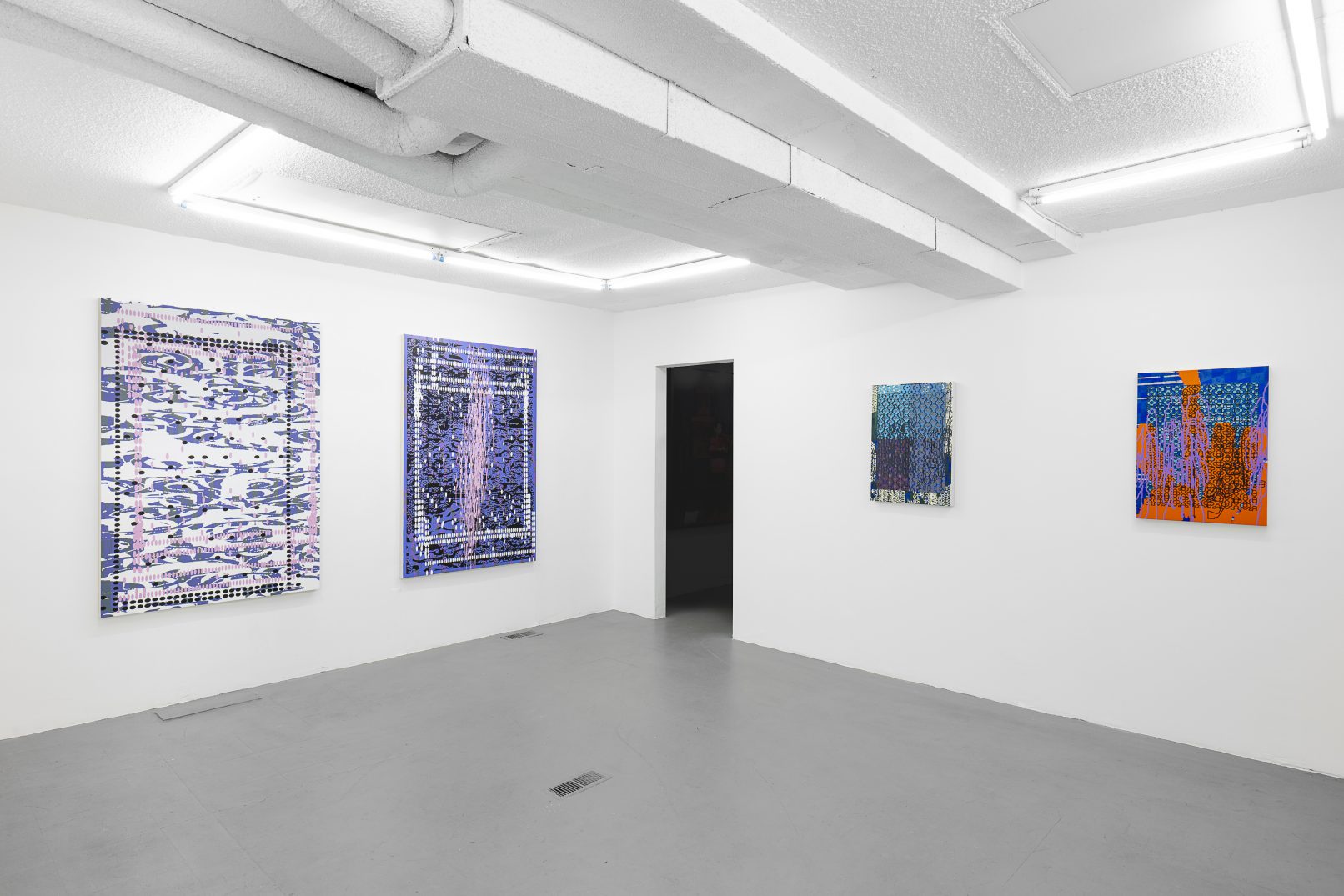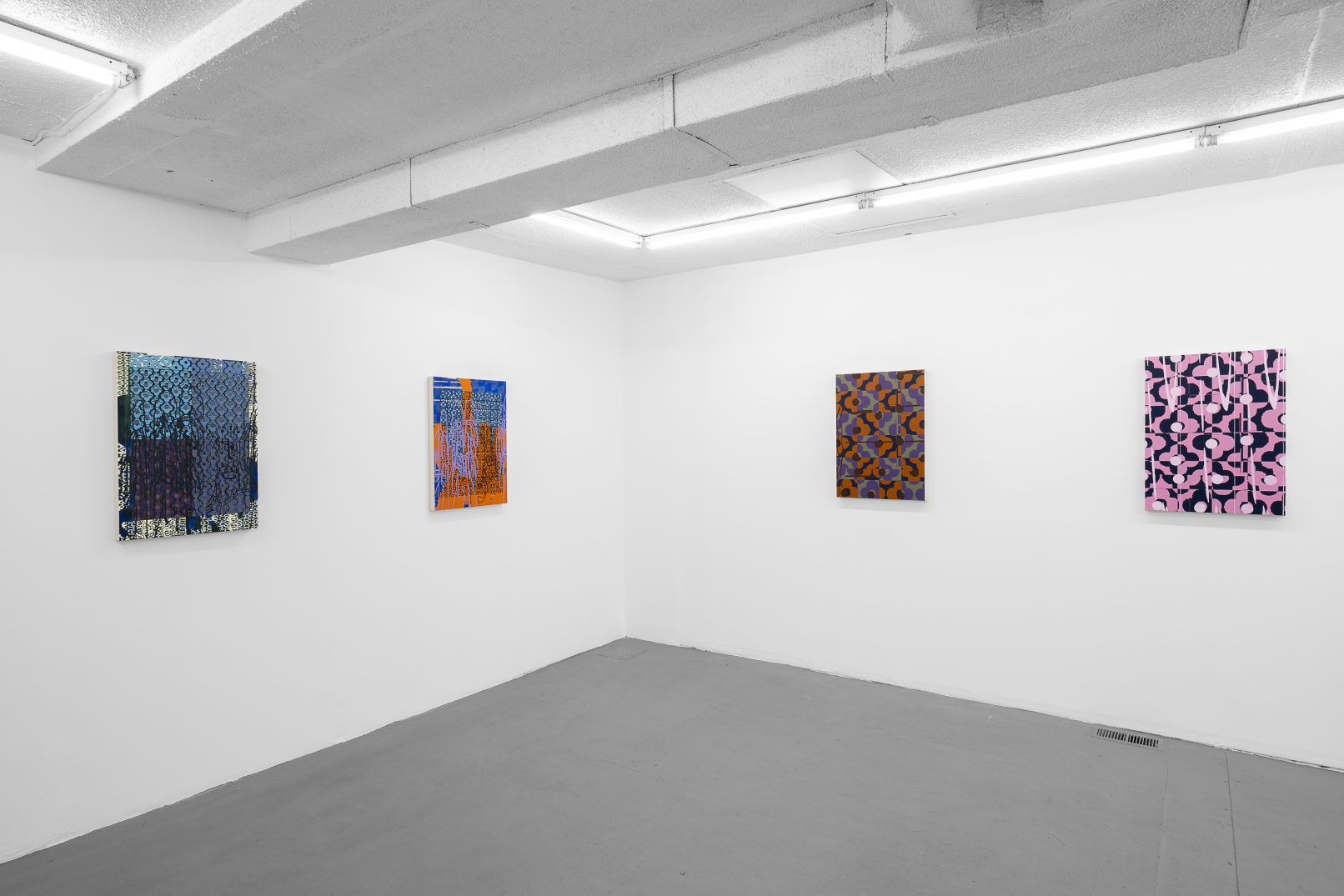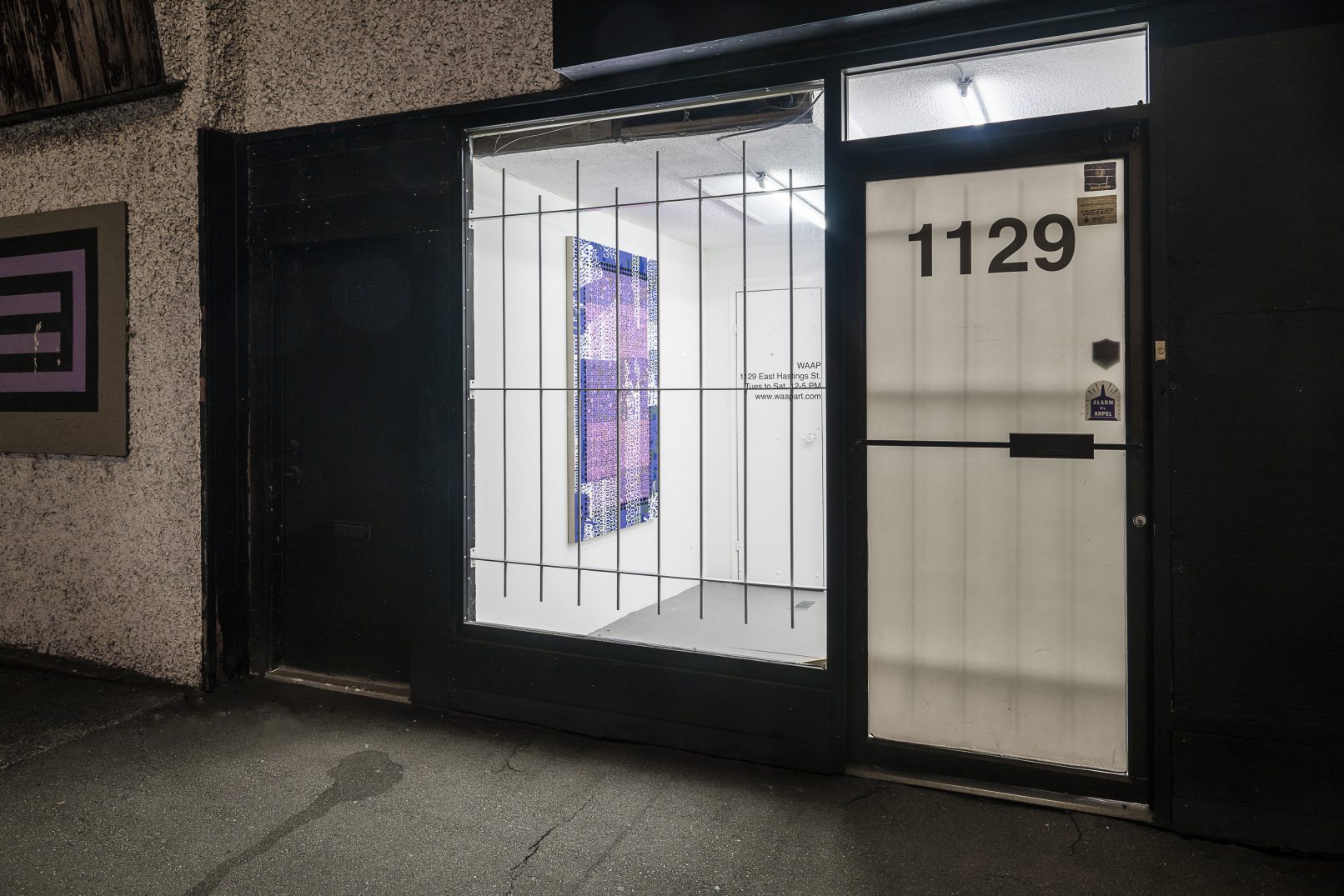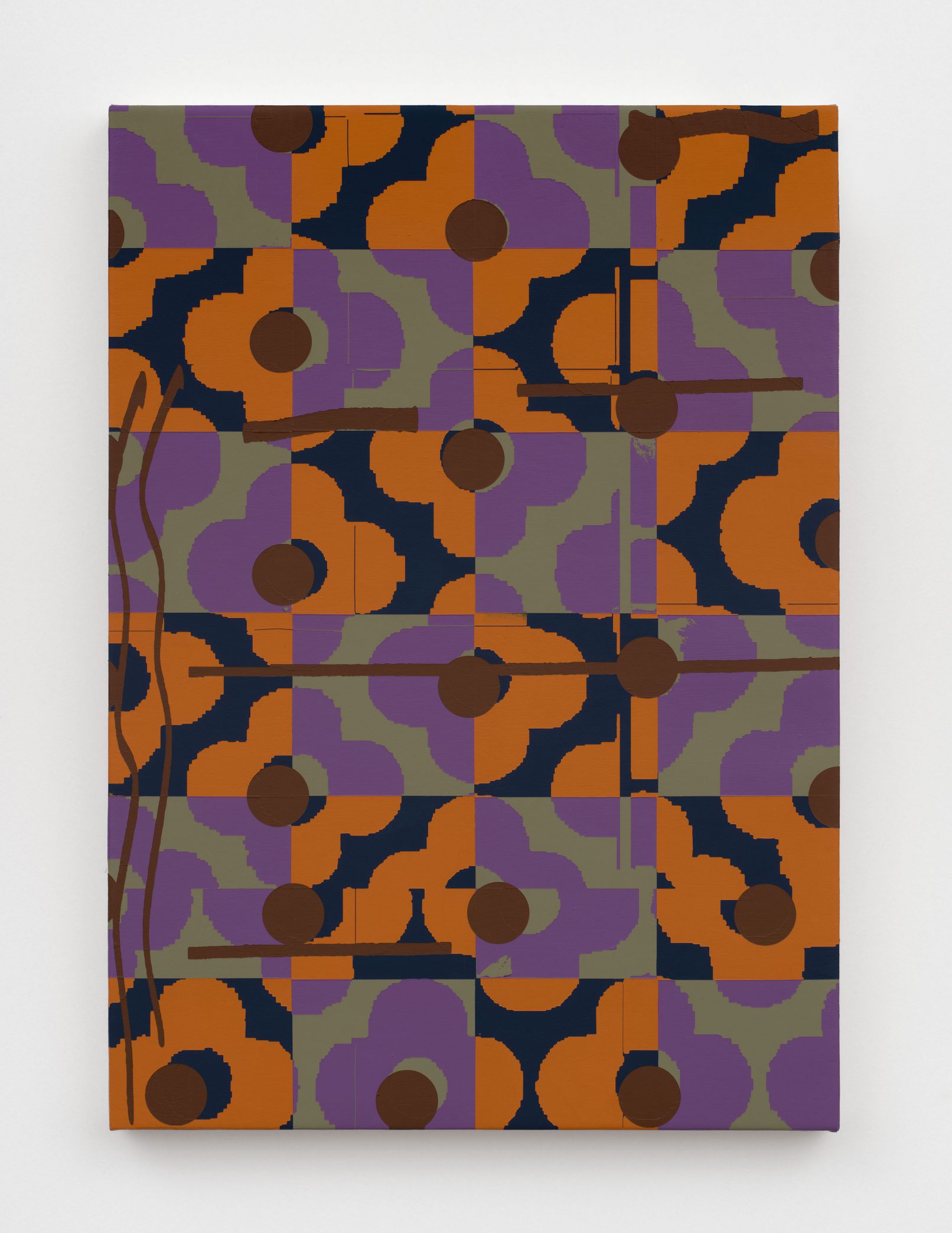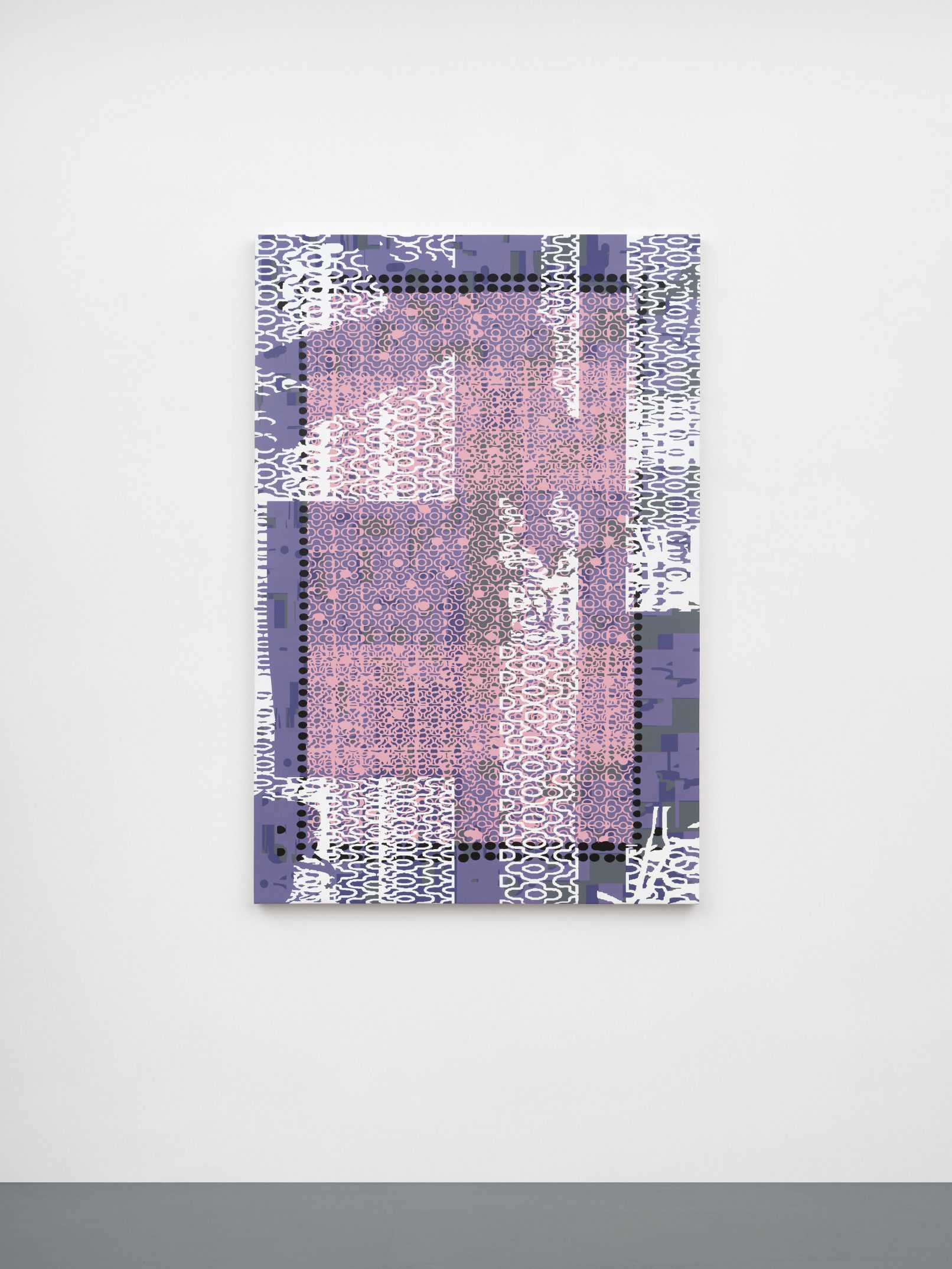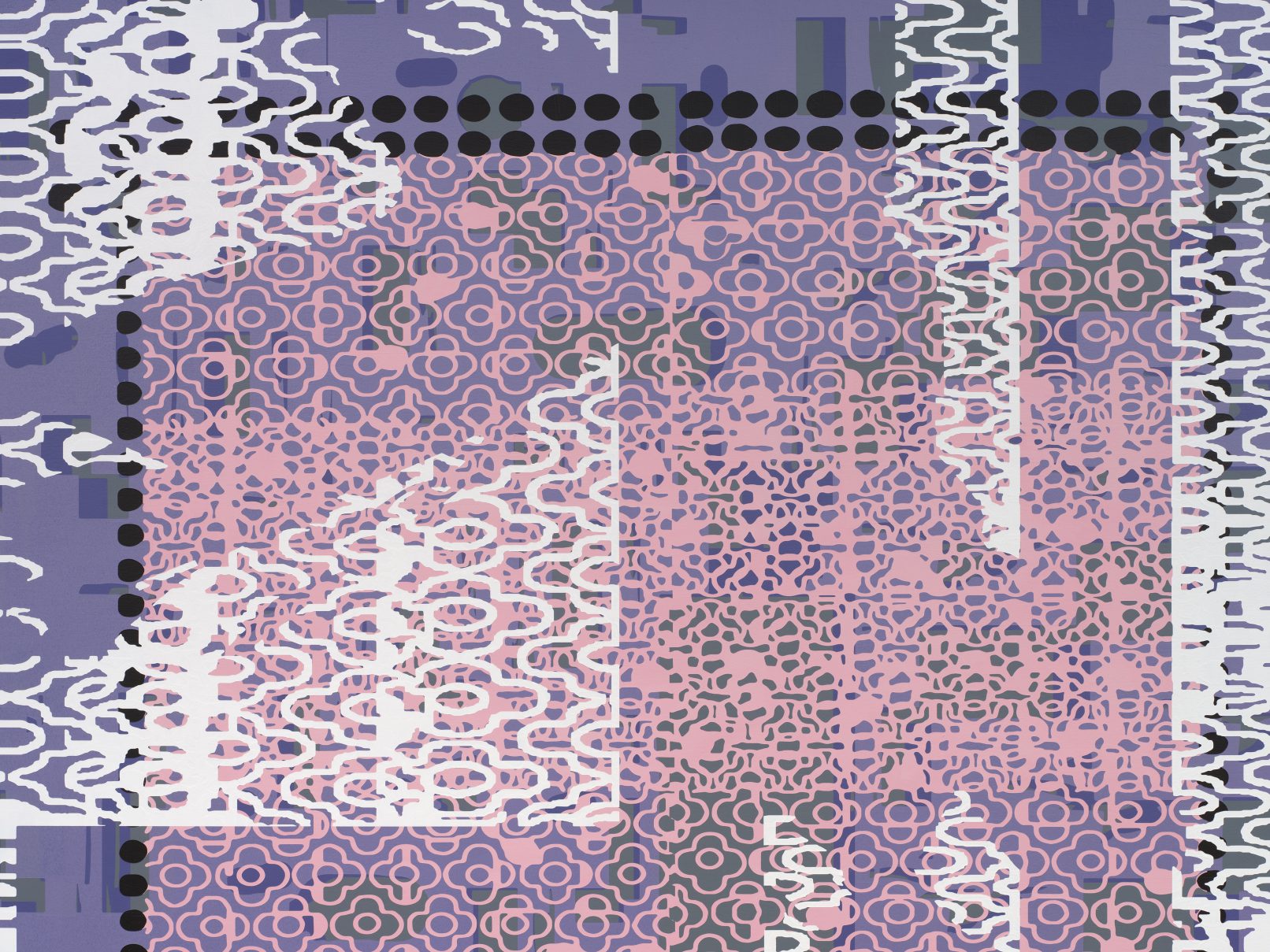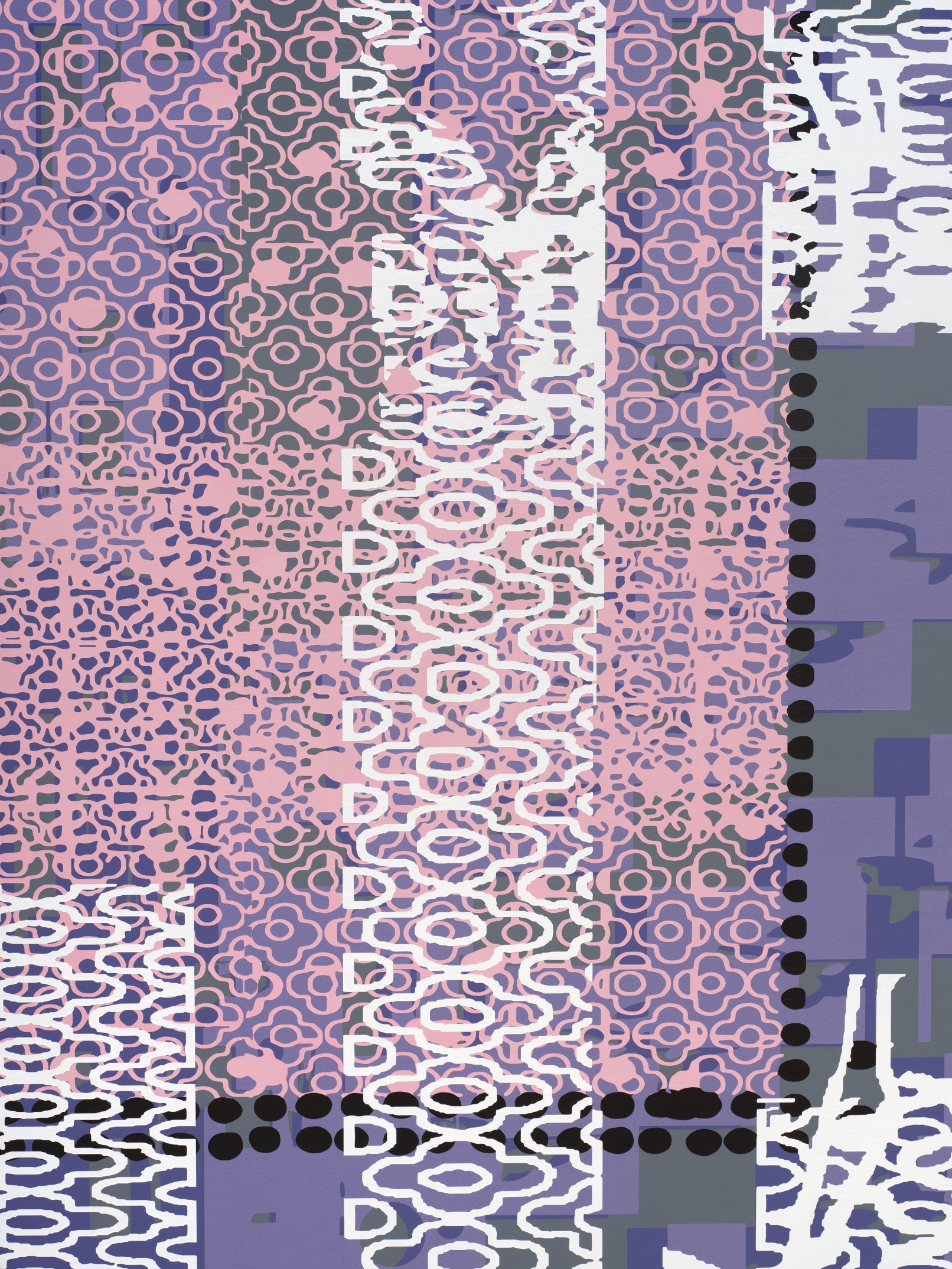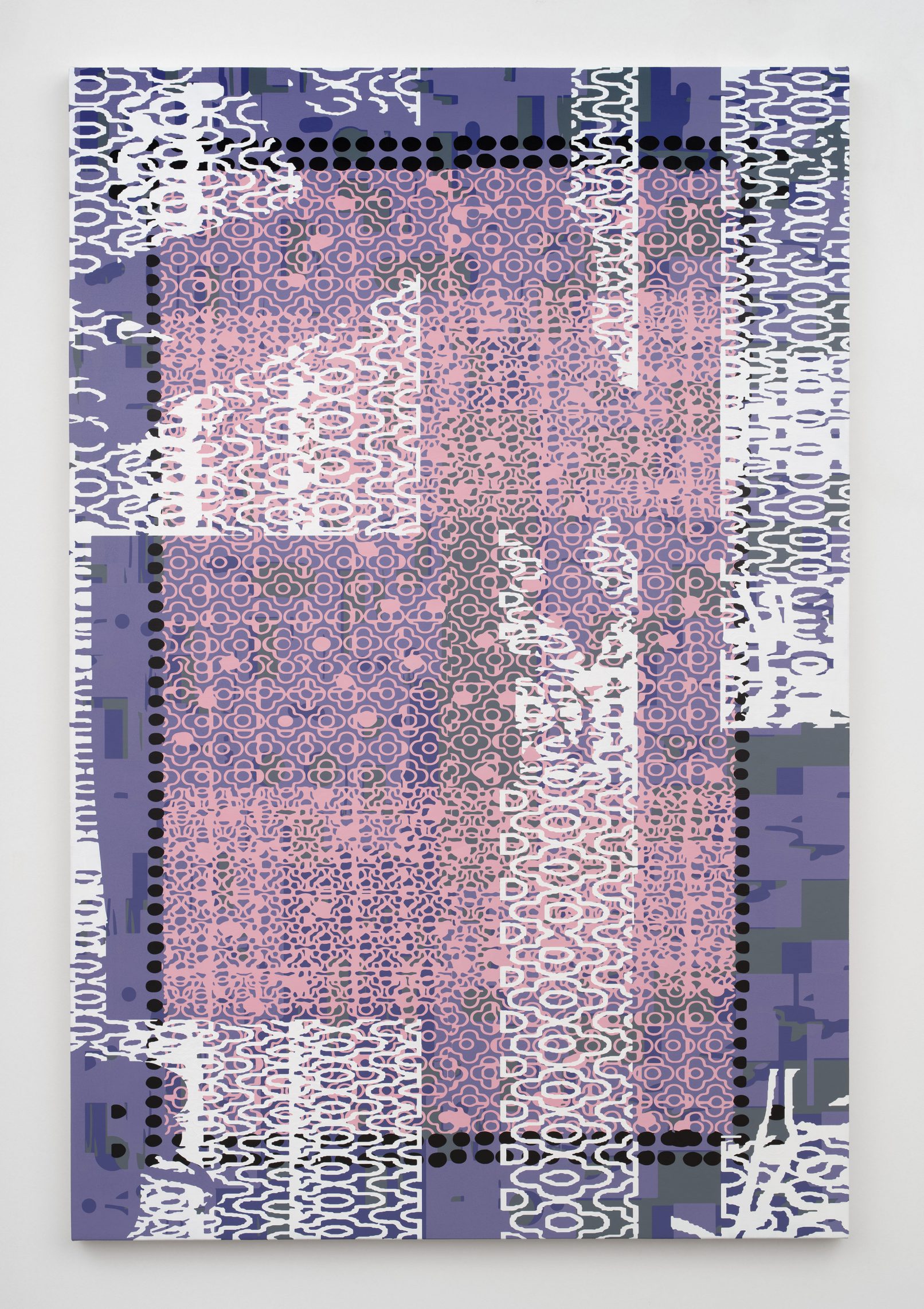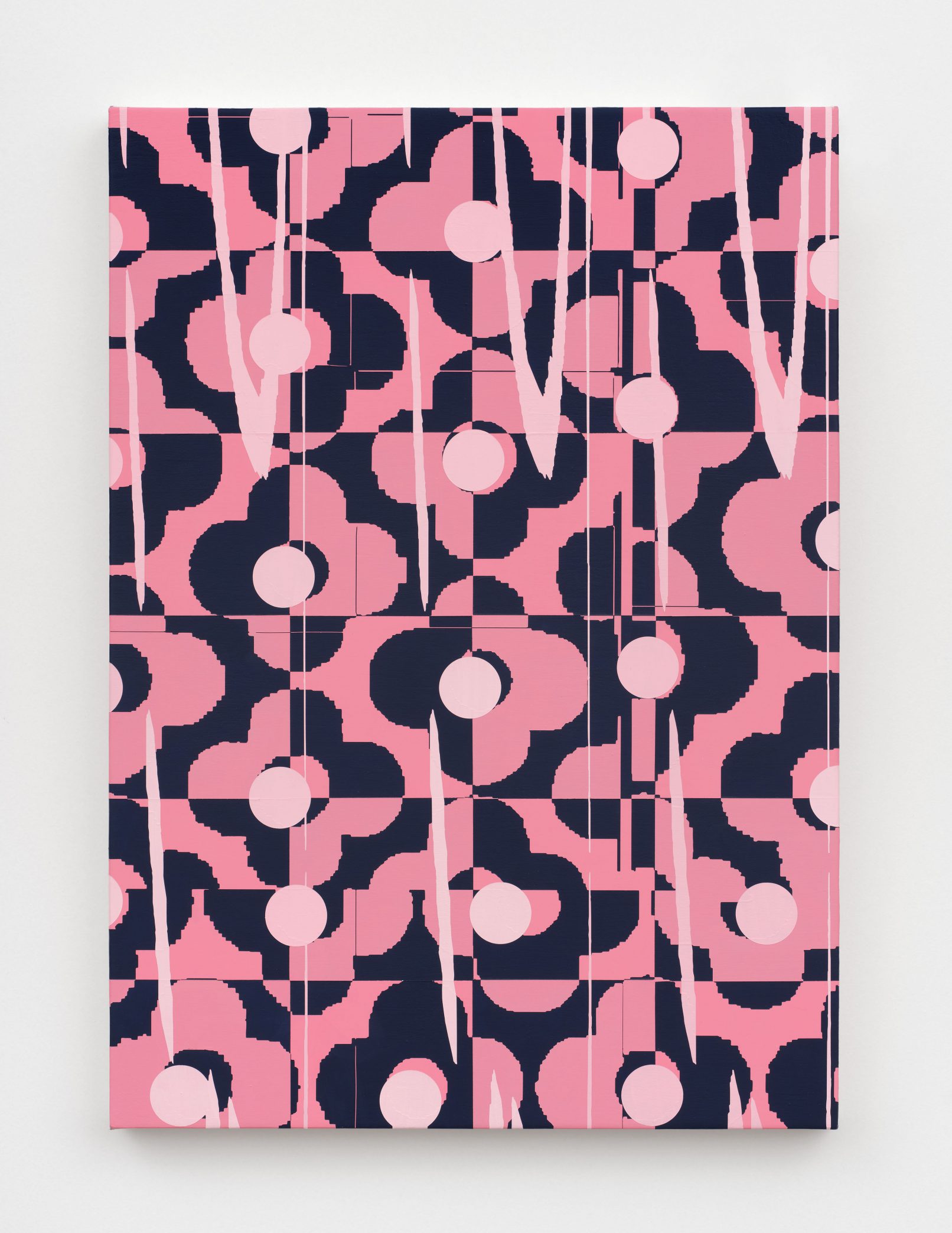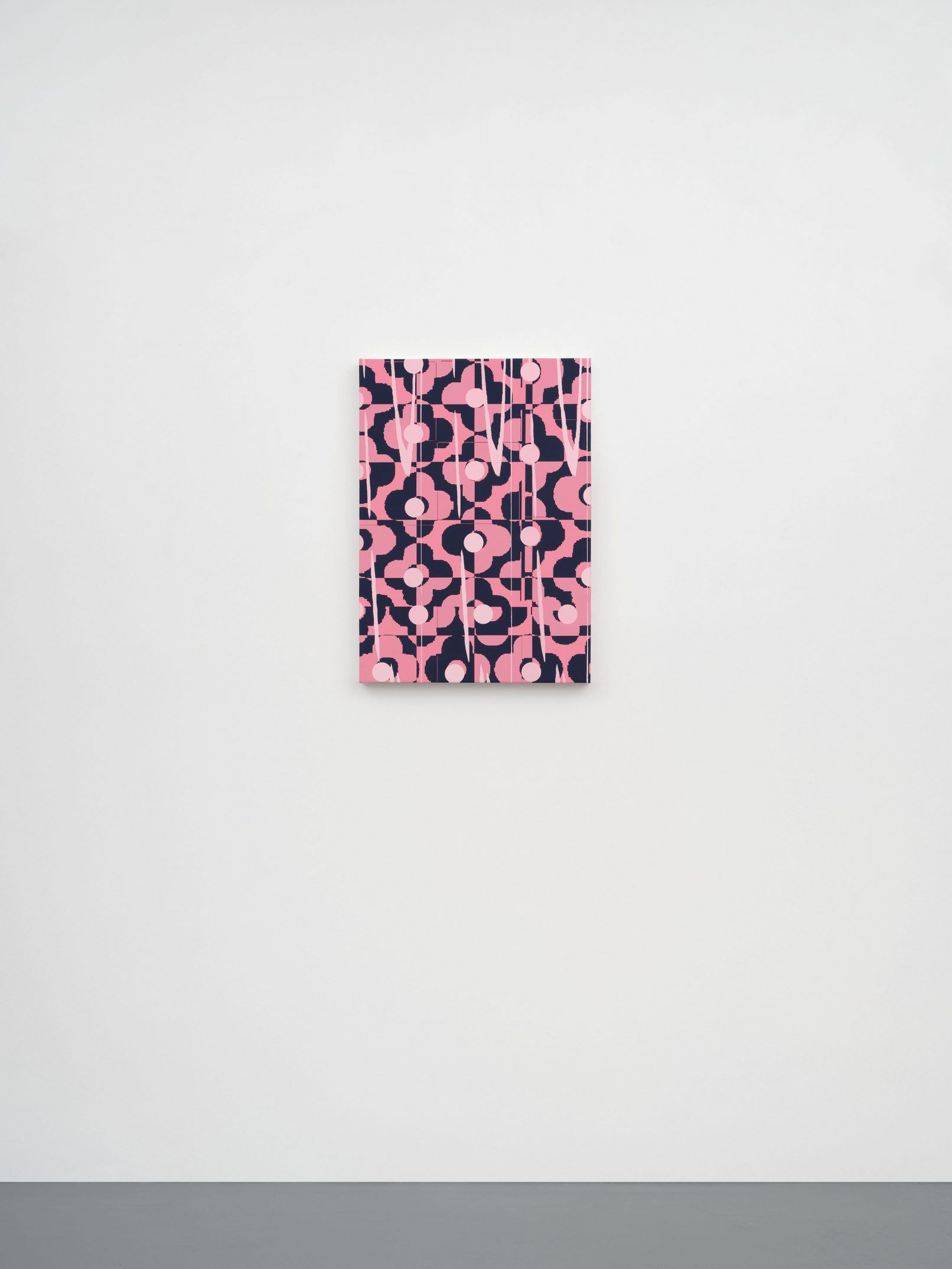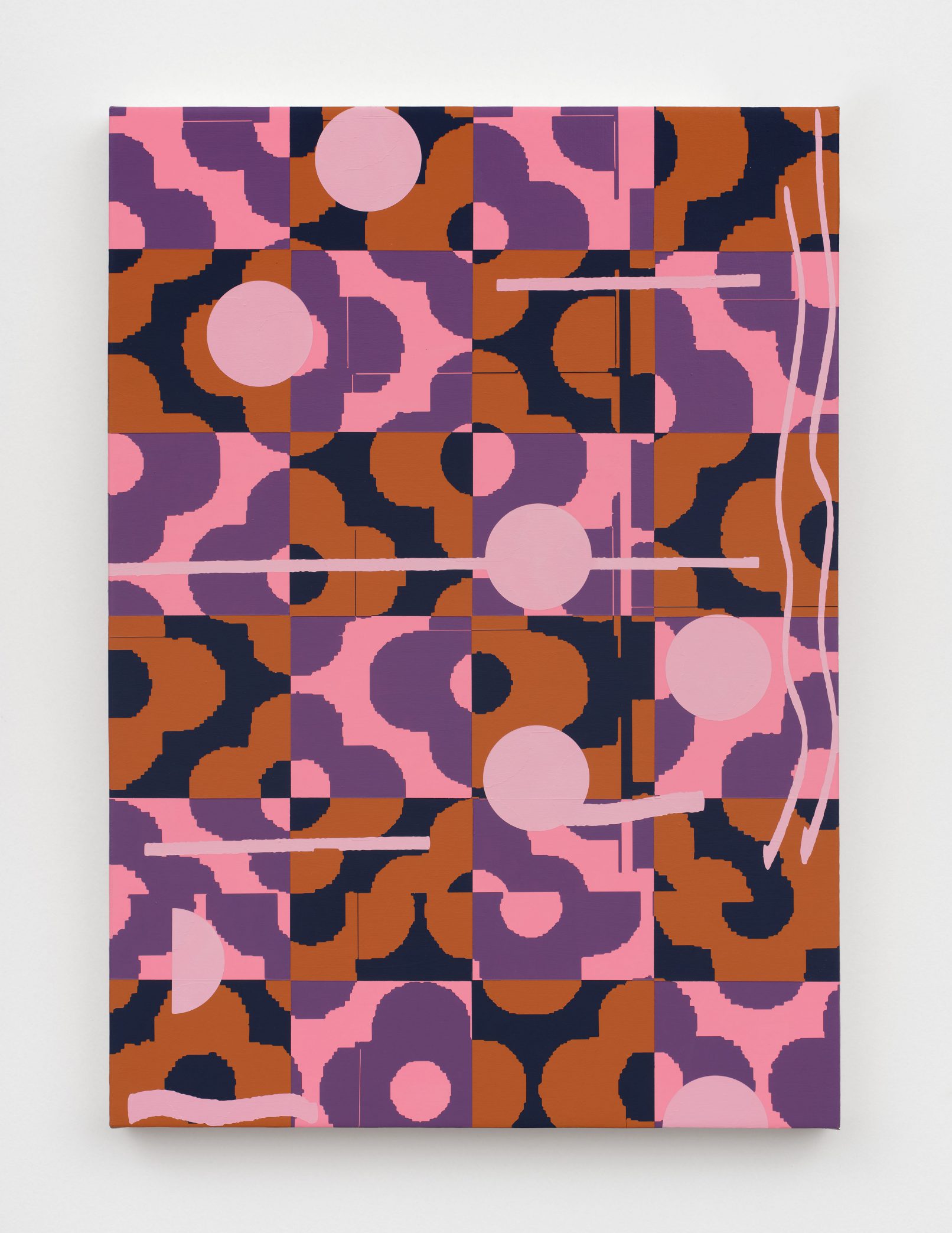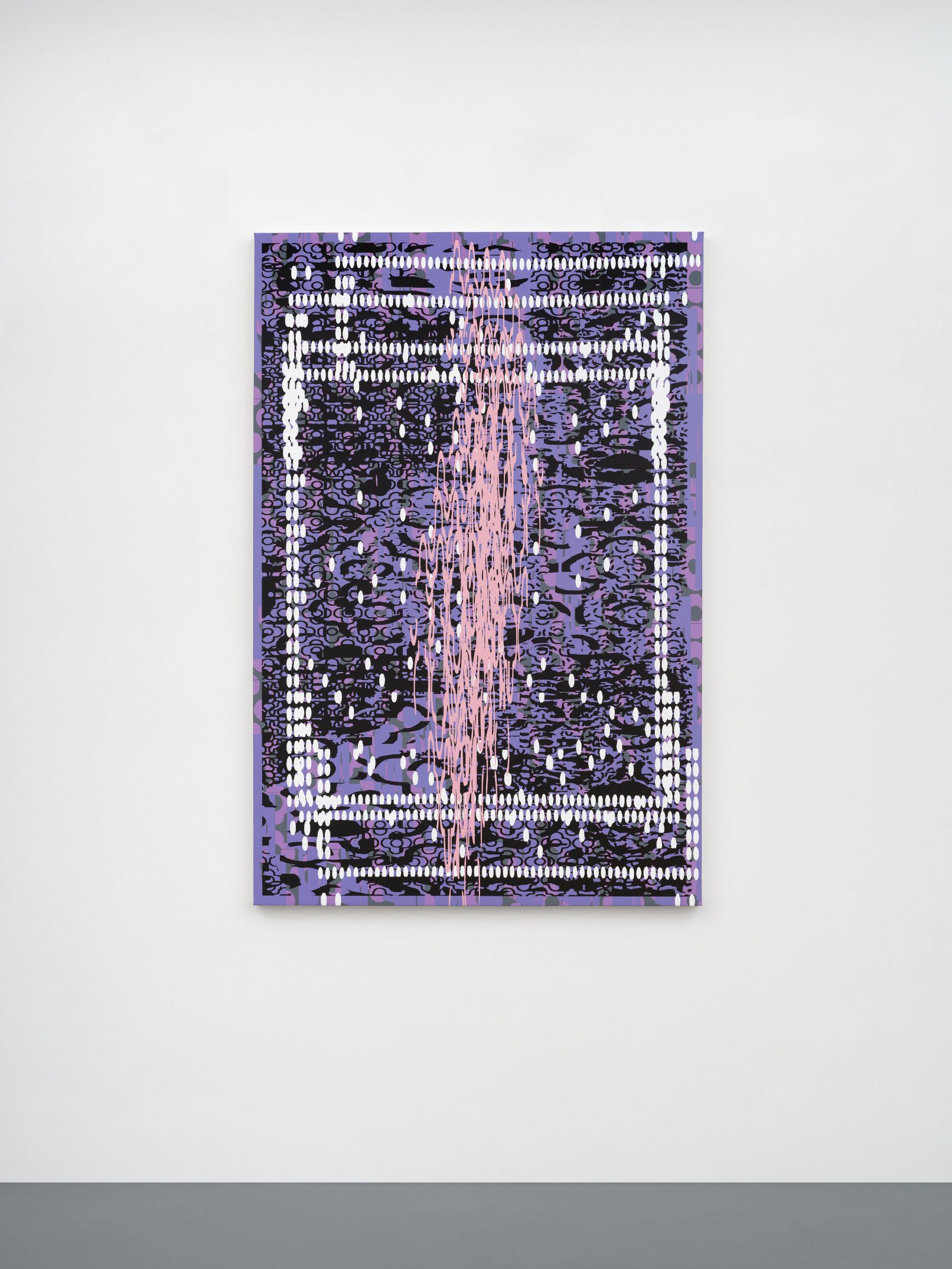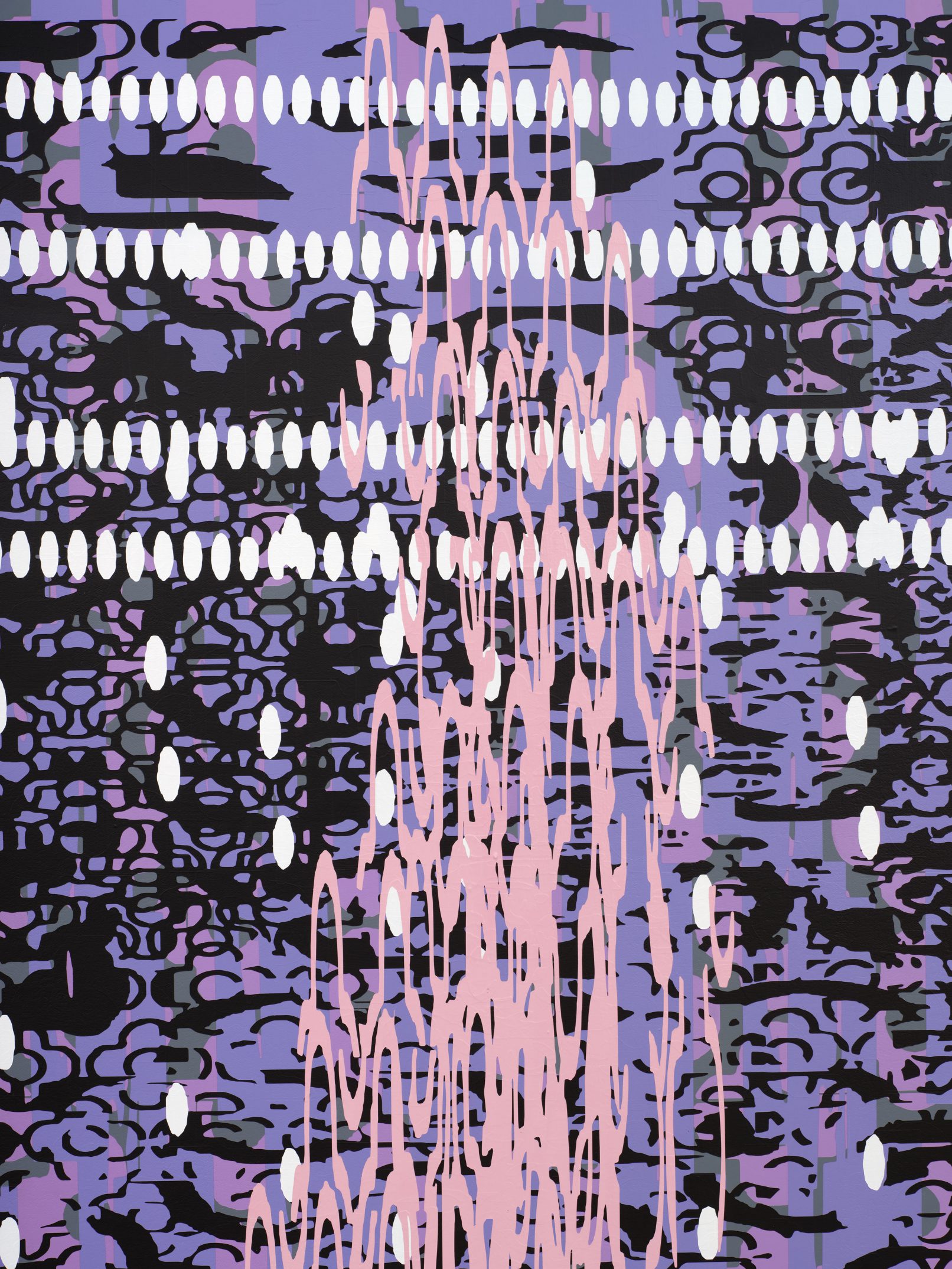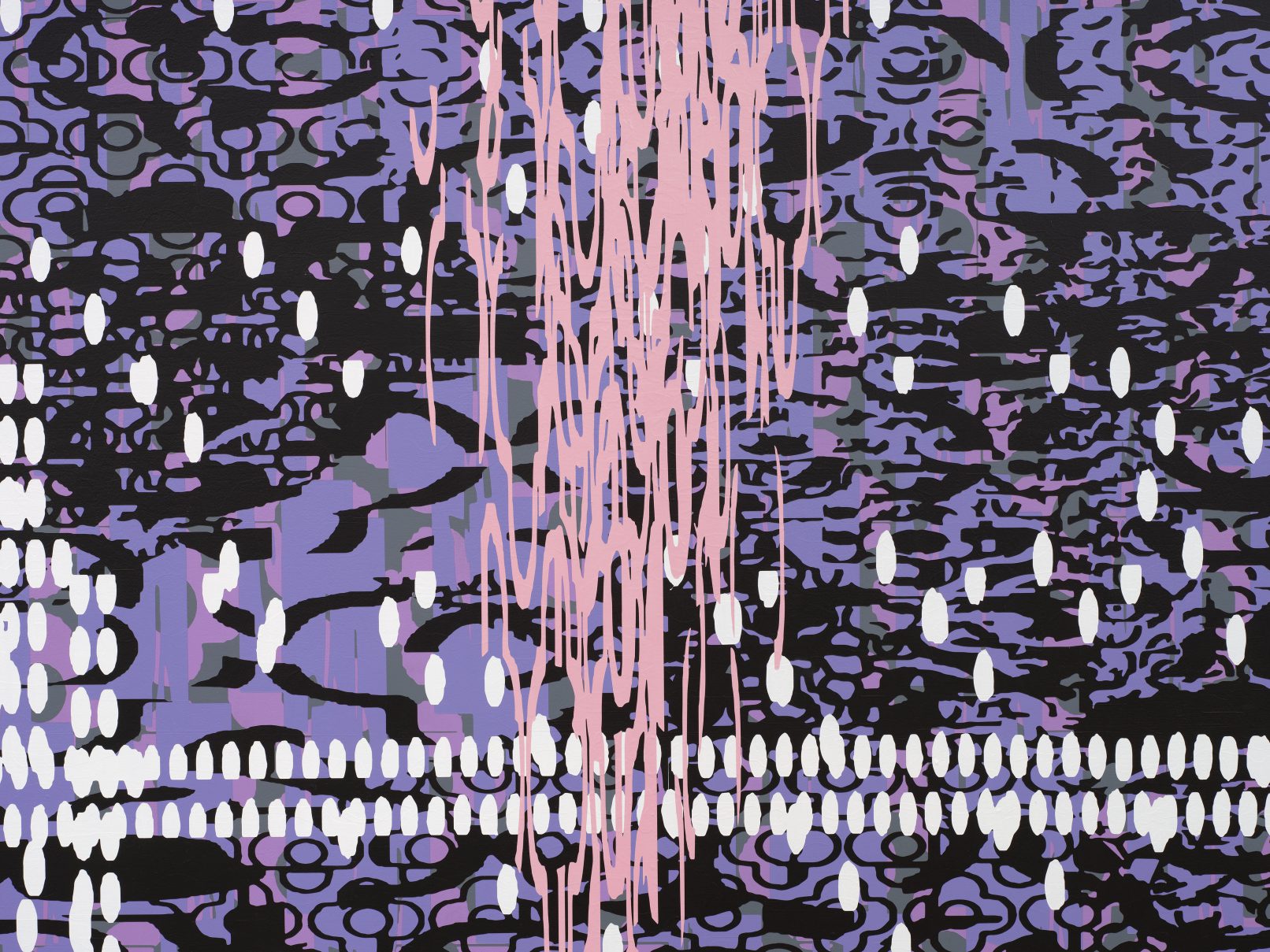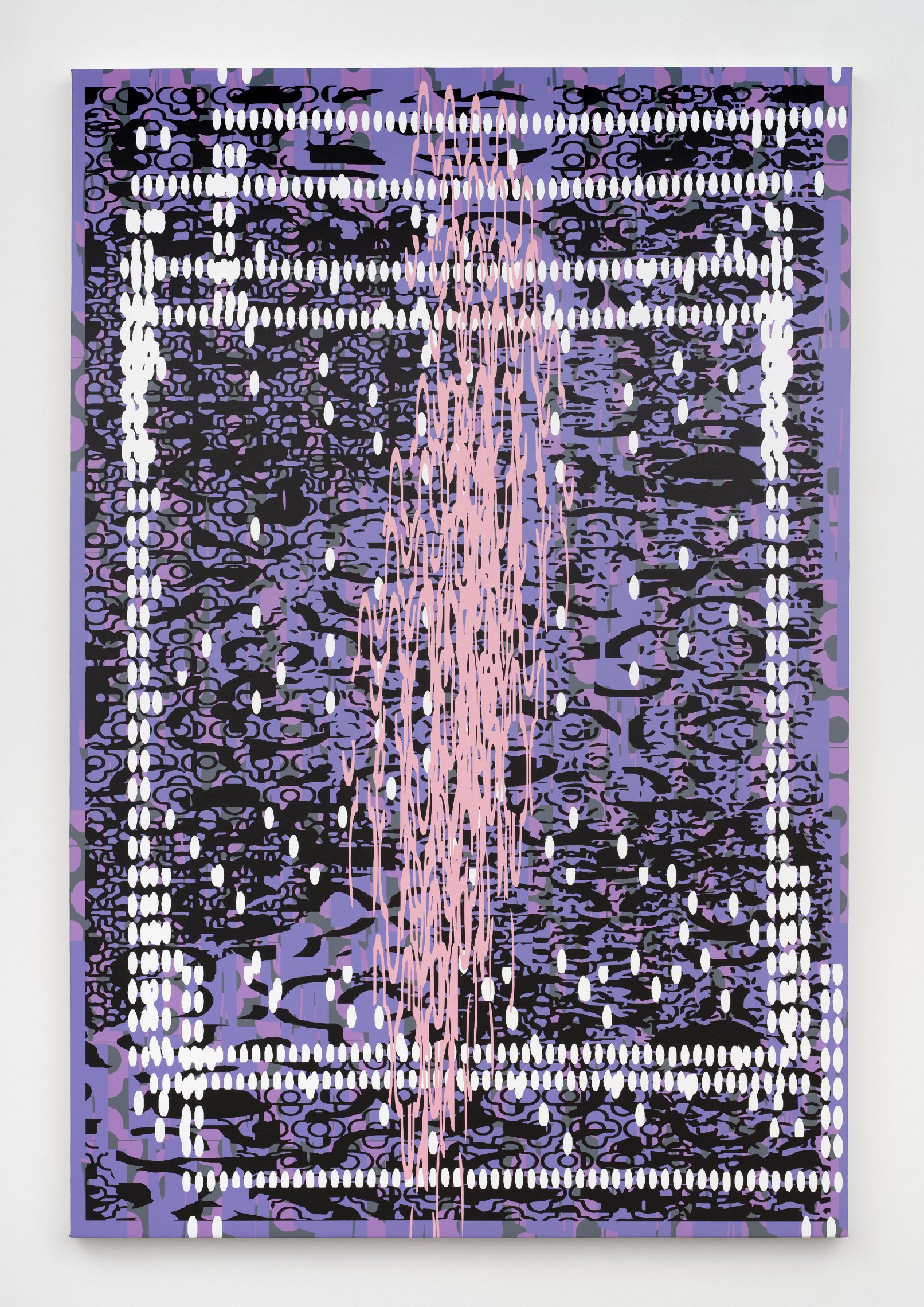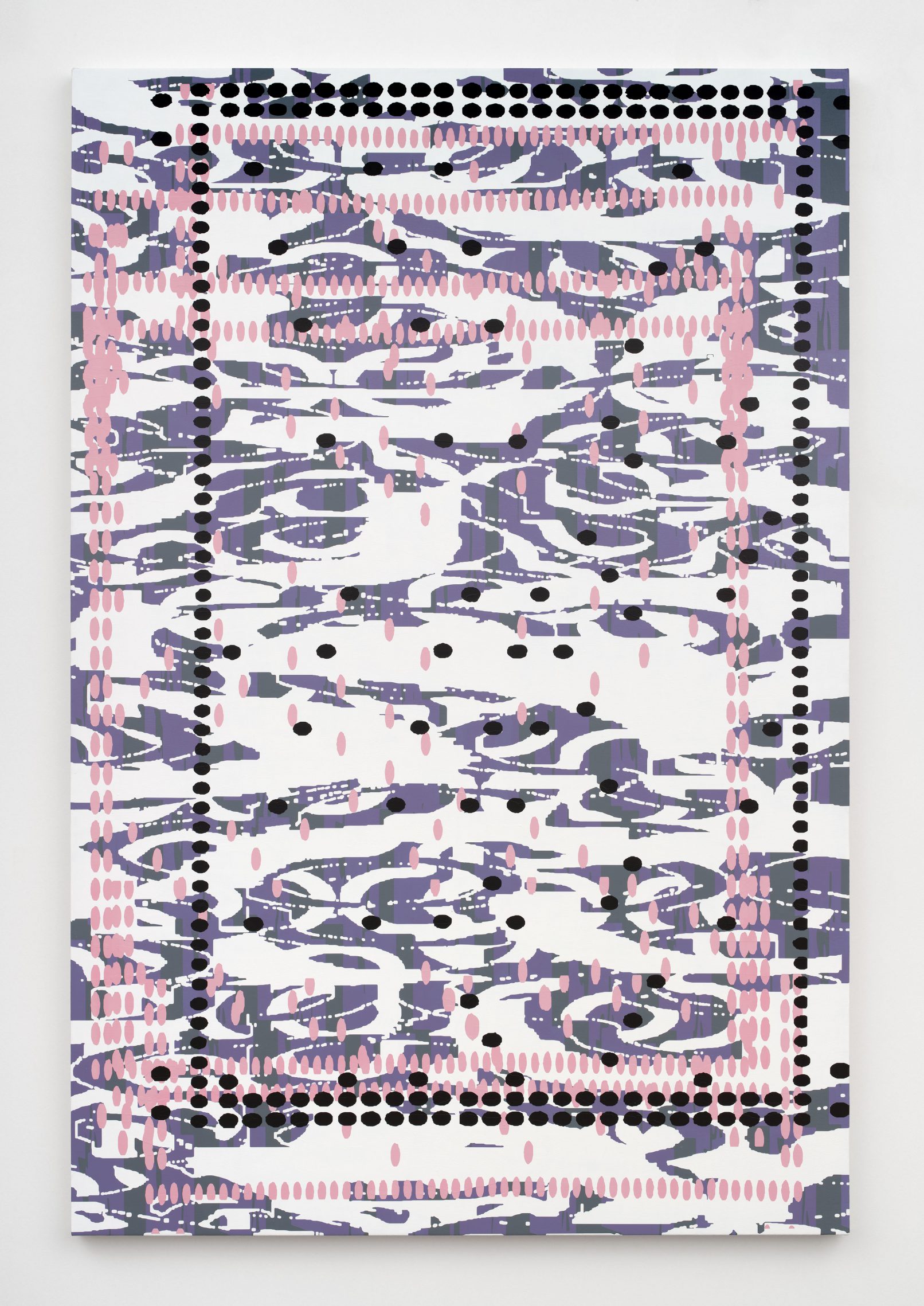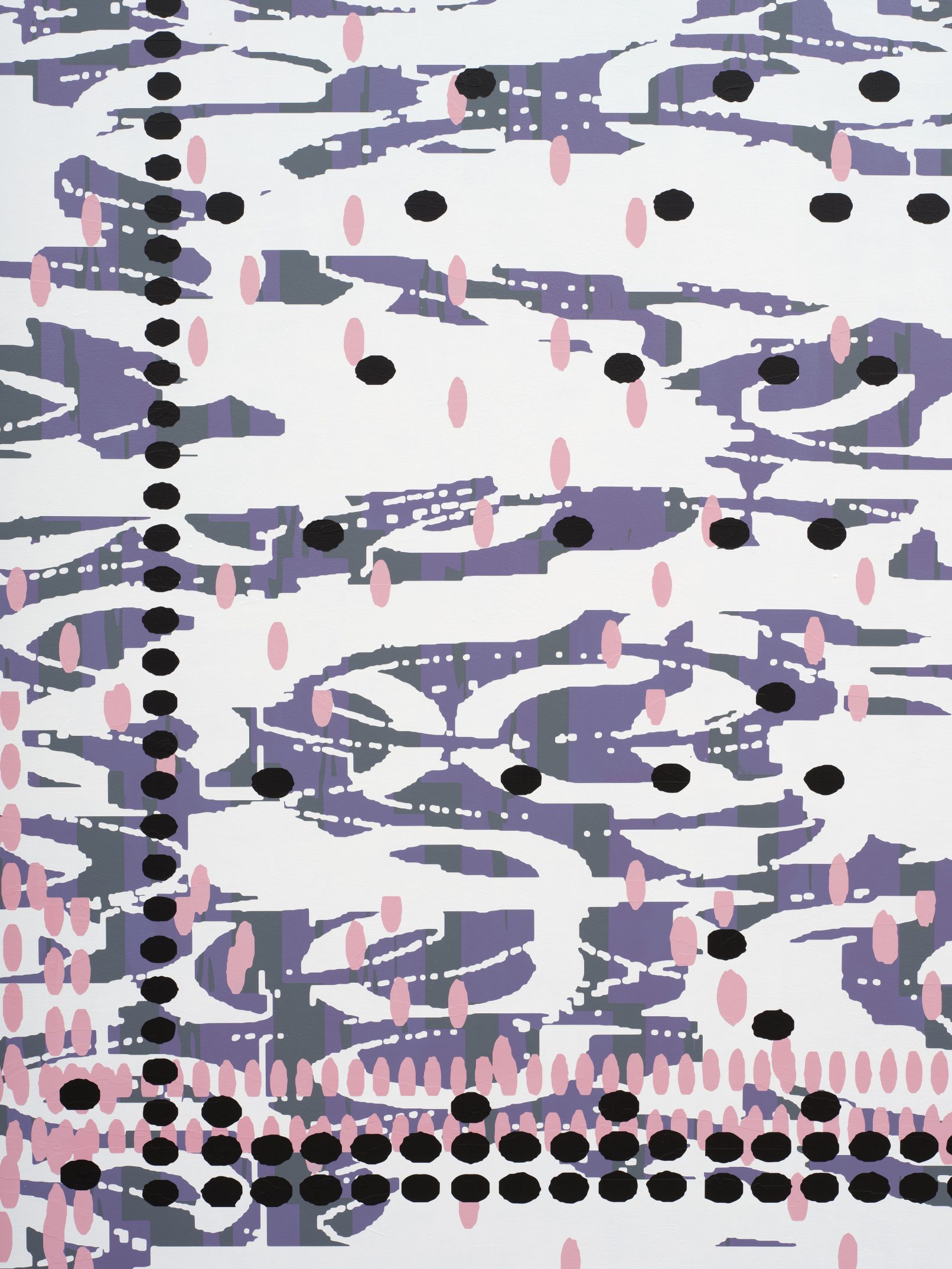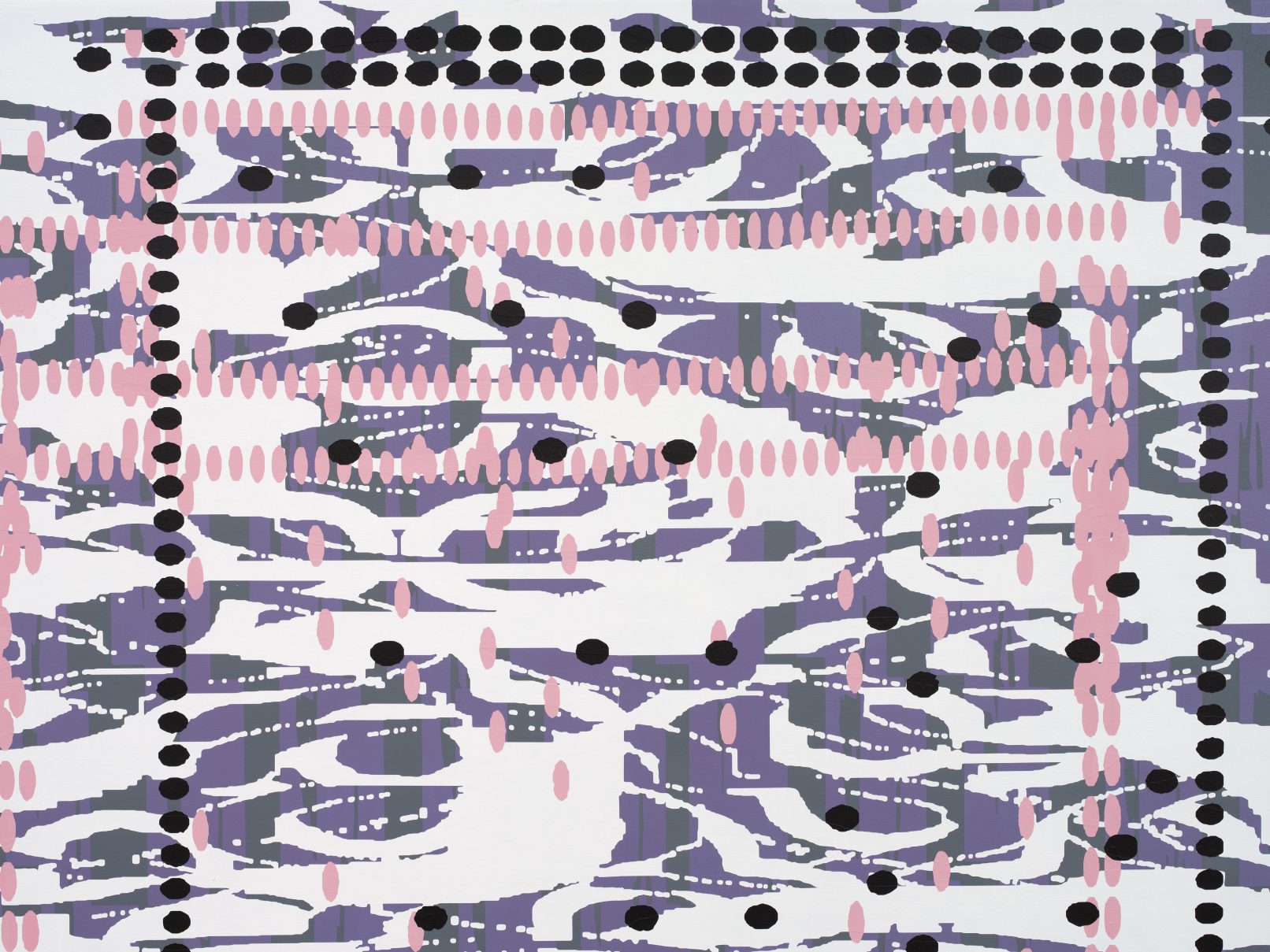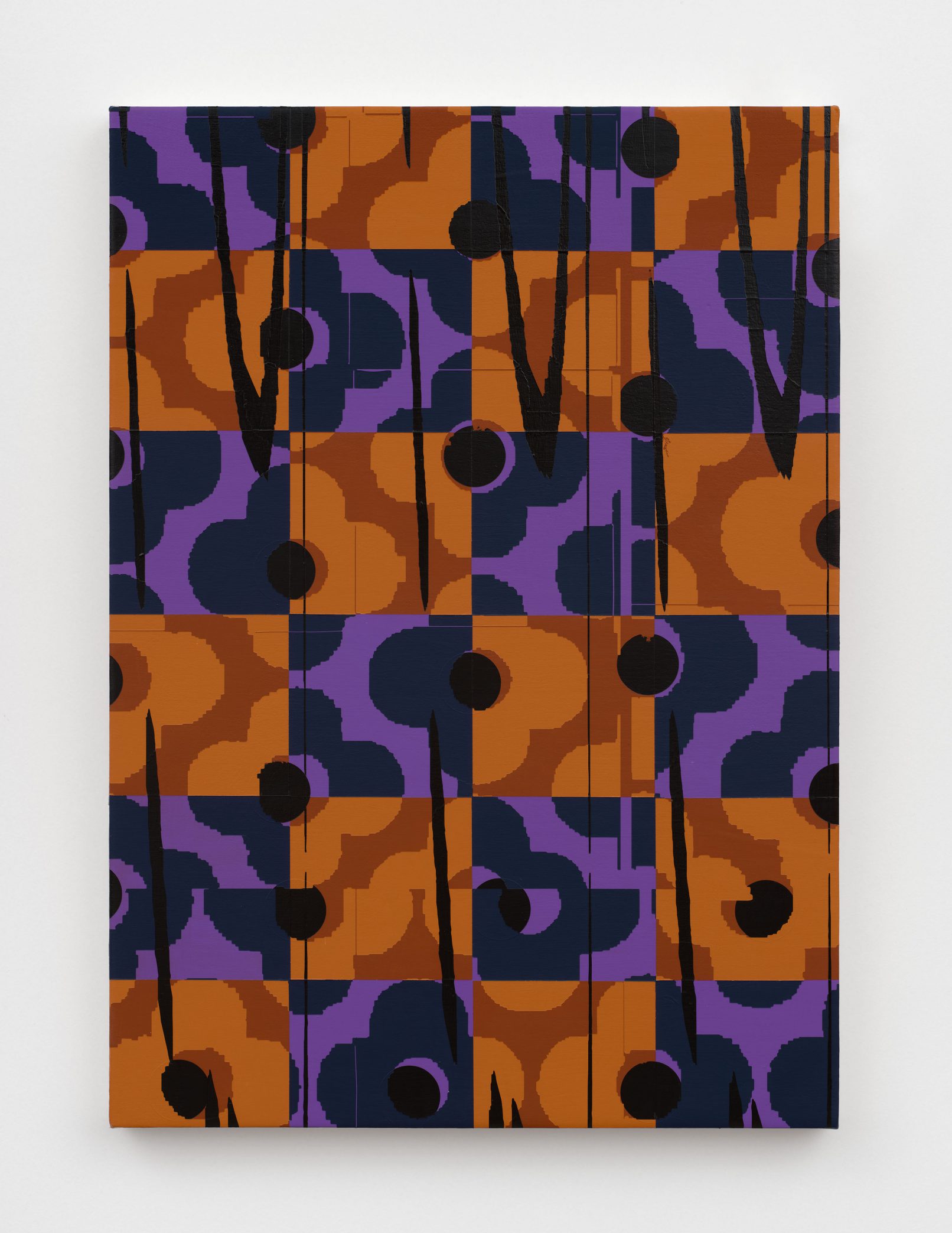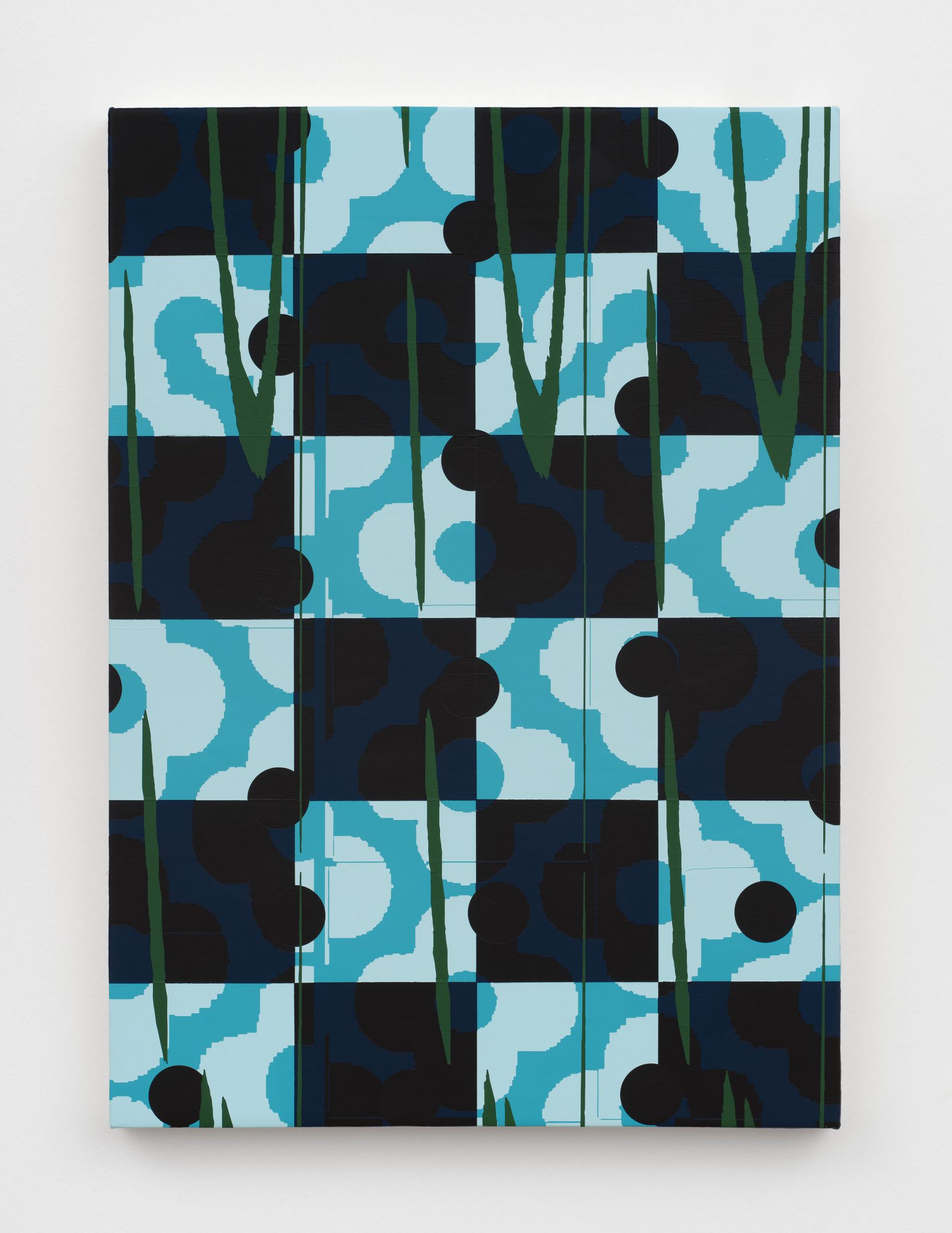ALEX HEILBRON: Assembler
ALEX HEILBRON
Opening reception: Sat, Sept 7, 4-8 PM
Exhibition: Sept 7 – Oct 12, 2024
Hours: Thurs – Sat, 12-5 PM
For preview or sales inquiries, please contact Wil Aballe, wil@waapart.com
WAAP
1129 East Hastings St.
Vancouver, BC
Canada V6A 1S3
Assembler
0. An assembler is a person who puts a machine or its parts together. 0. For example: a woman stands at an assembly line and bonds tiny wires to semiconductors. 0. Assembler also describes a computer program that converts basic commands into binary code.
1. Heilbron’s paintings repeat a four-petalled flower grid. 1. Translated between computer programs and then onto the canvas by Heilbron’s hand, the grids stretch and warp, frayed by pixelation and slippage.
0. The first machine to use a form of binary code was the Jacquard loom. Punch-cards directed the pins of the loom as it wove intricate patterns. 0. Early computer designs used similar punch-card systems to input data. 0. “The Analytical Engine,” wrote Ada Lovelace of one such design, “weaves algebraic patterns, just as the Jacquard loom weaves flowers and leaves.”
1. In three larger paintings rows of opaque circles and patches of glitch interrupt the grid. 1. The painted grid is woven, like brocade cloth, with the ordered density of a motherboard.
0. In the 1940s, IBM employed women “computers” who operated the company’s early punch-card computational machines. 0. Detailed, repetitive, low-wage labor. 0. The word “distaff” means both “spindle” and “women’s work.”
1. Heilbron’s smaller paintings repeat the gridded floral motif at larger scale. 1. Here, opaque circles, or punched holes, partly eclipse the flower’s round centre, while dashes and lines—gestures, maybe, or trailing threads—snag and slash the grid.
0. At NASA, women wove metal wires by hand into the Apollo Guidance System core. 0. Hands thread, twine, twist, plait, bond.
1. Collapsed onto the single plane of the canvas, hole-punch and woven pattern, input and output, code and program collide. They clash and loop. 1. Heilbron assembles, fractures, reassembles.
0. Complex systems break down into small, recursive motions and parts.
1. Out of small, recursive motions and parts, complex systems emerge.
0. 1. Alex Heilbron’s work investigates the conceptual and formal potential of pattern as an index of cultural perceptions of femininity across various social, psychological, and political contexts.
– Ashlyn Ashbaugh
Alex Heilbron’s work employs patterns to explore how femininity is perceived culturally, psychologically, and politically. She received her BFA in 2009 from the San Francisco Art Institute, studied with Rita McBride and Christopher Williams at the Kunstakademie Düsseldorf from 2014-2017, and earned an MFA from the University of California, Los Angeles in 2020. Recent solo presentations include Meliksetian Briggs, Dallas and Los Angeles (2023, 2021), Hiestand Galleries, Oxford (2020), and Ashley, Berlin (2017). Significant group shows include the Santa Barbara Museum of Art, Santa Barbara (2024), The Modern, Fort Worth (2023), Anne Barrault, Paris (2022), LAXArt, Los Angeles (2019), Kunstverein für die Rheinlande und Westfalen, Düsseldorf (2018), and the Moscow Museum of Modern Art, Moscow (2017). She has received numerous awards, including the William and Dorothy Yeck Purchase Award, the Helen Frankenthaler Scholarship in 2019-2020, and a Pollock-Krasner Grant for 2023-24. Heilbron lives and works in Los Angeles, California.
Image:
Alex Heilbron
Casual system, 2024
Acrylic on Canvas on Panel
28 x 20 in (71.1 x 50.8 cm)
